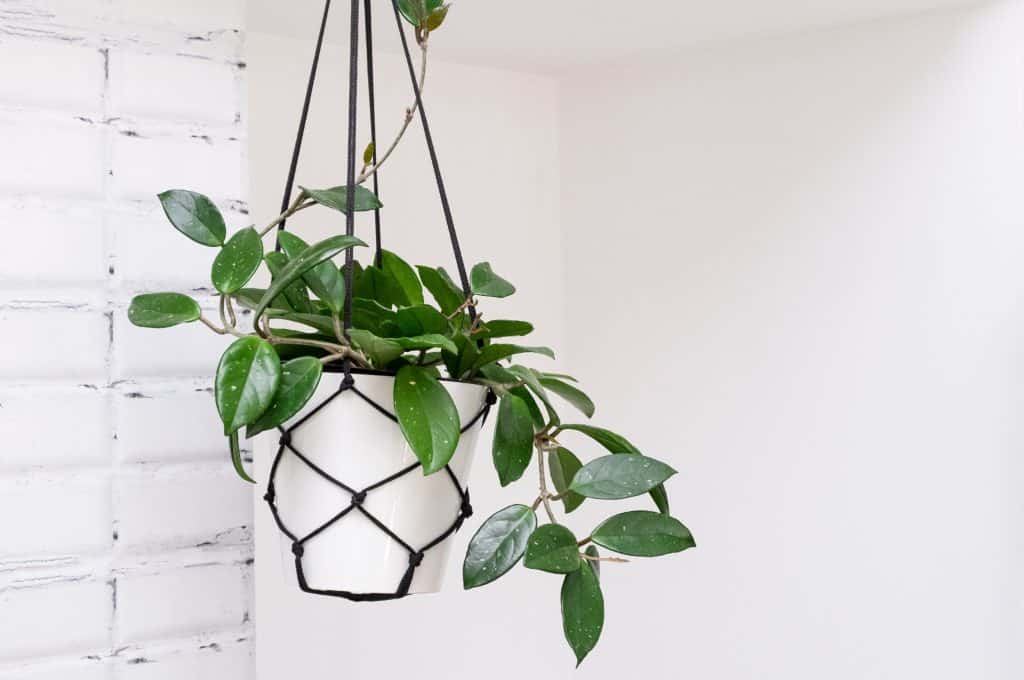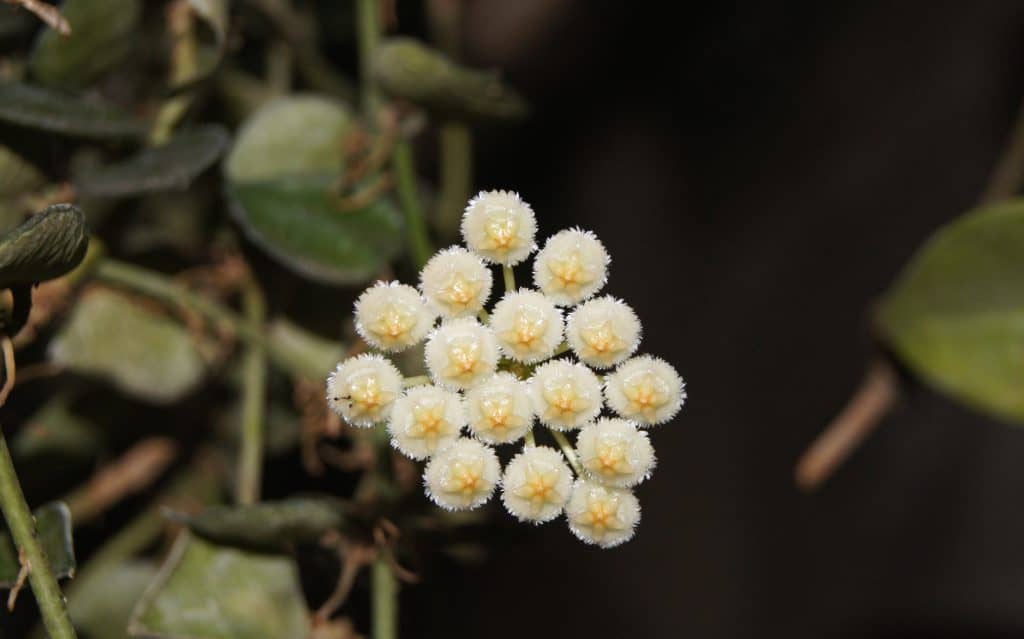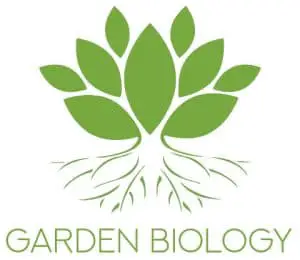The Hoya Lacunosa plant is a beautiful, easy-to-care-for houseplant. Native to Southeast Asia, this plant is also known as the Porcelain Flower or Wax Plant. Hoya Lacunosa typically grows as a vine with dark green leaves that have a waxy texture and produces small, white or pink flowers with a yellow center. It gets its name from the sunken veins on its foliage.
Hoya Lacunosa Care
The Hoya Lacunosa is a low-maintenance, easy-to-care-for plant that does well in a variety of conditions. Still, there are a few care tips that you should know to keep your Hoya Lacunosa healthy and happy.
Lighting Requirement
Hoya Lacunosa plants do best in bright, indirect sunlight but can also tolerate low light conditions. They do not need direct sunlight and can even grow under fluorescent grow lights. The low light tolerance of Hoya Lacunosa makes it a perfect indoor plant. If you decide to grow your Hoya Lacunosa indoors, place it near a window where it will receive plenty of bright, indirect light. Outdoors, place your plant in partial or full shade. It’s recommended to only expose the plant’s delicate leaves to direct morning sunlight. Anything else will burn the leaves.
Soil Type and pH Requirement
Hoya Lacunosa prefers a slightly acidic soil with a pH of between six and seven. If the soil is too dense, it can strangle the roots. A well-draining soil mix is critical for the livelihood of this plant. They are not overly fussy about soil type but do prefer a lighter mix such as African violet potting mix or cactus mix. If you want to increase the drainage of the soil, you may put perlite or coco coir into the soil mix. It may also be beneficial to add bark or wood chunks. To assist the plant in staying healthy and growing well, ensure that the potting mix is not soggy. This plant rarely needs repotting and prefers to be root-bound. Change the soil every two years to ensure the plant is getting proper nutrition.

Watering and Humidity
Hoya Lacunosa plants are drought tolerant and can go long periods without water. Hoya Lacunosa plants should be allowed to dry out completely between watering. Be certain that the pot or container you’re growing Hoya Lacunosa in has adequate drainage holes. If there are no drains where water can go after watering, your plant will stay damp for days, which might hurt its development. Allow the water to run via the drainage holes until the plant no longer drips and then place it back where you normally keep it. Water your Hoya Lacunosa once every one to two weeks, making sure to thoroughly drench the soil and then allow it to drain completely. Also, make sure to water deeply but infrequently to avoid root rot and avoid getting water on the leaves as this can cause them to develop brown spots.
Hoya Lacunosa plants prefer high humidity but will do fine in average household humidity levels. Specifically, they thrive in humidity levels of at least 60 percent. If you are growing your Hoya Lacunosa indoors, consider placing it in a bathroom or kitchen where the temperature is typically warmer, and the humidity is higher. If you live in a region with low humidity, you may want to use a plant mister or humidifier to guarantee that the plants are adequately hydrated. Misting is more of a temporary solution, as the moisture from a mister evaporates much faster. A humidifier is more recommended for this kind of plant. For optimum growth, a humidifier is strongly advised. You can also increase the humidity around your Hoya Lacunosa by placing it on a pebble tray. Hoya Lacunosa plants thrive in humidity levels of at least 60 percent.
Temperature
Hoya Lacunosa plants prefer warm temperatures and will not tolerate frost. If you are growing your Hoya Lacunosa outdoors, make sure to bring it indoors or protect it with a frost blanket if the temperature is going to dip below 50 degrees Fahrenheit. Hoyas are pretty tolerant and can survive a few night-time cold snaps. However, it will begin drooping leaves and looking unhealthy if it is consistently cold. It prefers an indoor temperature of 60 degrees Fahrenheit or above. During the summer months, you can grow your Lacunosa outdoors and use it as a hanging plant by training it to grow over bamboo hoops. You can also use it in a mixed planting or train it to grow on a trellis.
Hardiness Zone
Hoya Lacunosa plants are not cold hardy and should only be grown outdoors in USDA hardiness zones 9 through 11. If your Hoya Lacunosa outdoors, make sure to bring it inside during the winter when the temperature is colder.
Fertilization
Hoya Lacunosa plants are not heavy feeders but will benefit from being fertilized once per month during the growing season. Use a balanced, water-soluble fertilizer diluted to half strength and apply it every two weeks during the spring and summer months. Be sure to stop fertilizing in the fall and winter when growth slows down. If the fertilizer seems to be harming the plant more than helping it, you can replace the fertilizer by mixing organic worm castings into the soil to help with nutrients.
Hoya Lacunosa Propagation
Hoya Lacunosa can be propagated by cuttings and seeds. To propagate Hoya Lacunosa by cuttings, take a four- to six-inch cutting from a healthy plant and remove the lower leaves. Dip the cutting in rooting hormone and plant it in a well-draining potting mix. Place the pot in a warm, humid location and keep the soil moist but not soggy. The cutting should root within four to six weeks.
Hoya Lacunosa plants can also be propagated by seed. To propagate Hoya Lacunosa by seed, sow the seeds in a well-draining potting mix and place the pot in a warm, humid location. Keep the soil moist but not soggy and the temperature between 70 and 80 degrees Fahrenheit. The seeds should germinate within four to six weeks.
Size and Growth Rate
Hoya Lacunosa plants are slow-growing evergreen vines that can reach up to six feet in length. They typically grow about one foot per year. However, the Hoya Lacunosa plant may take up to 3 years to bloom. Hoya Lacunosa plants are semi-succulent, meaning that they grow in close and alternate patterns. Prune the plant as needed to maintain the desired size. Pruning is best done after the plant stops blooming, as buds form on the newer growth. Be sure to avoid deadheading spent flowers. The spurs will produce new blooms next year.
Common Problems with Hoya Lacunosa
Hoya Lacunosa plants are relatively pest and disease-free. However, they can be susceptible to various diseases and pests if not properly cared after.
Root Rot
Root rot is a common problem with Hoya Lacunosa plants and is caused by too much moisture around the roots. Symptoms of root rot include wilting, yellowing leaves, and stunted growth. To prevent root rot, make sure to plant your Hoya Lacunosa in well-draining soil and water it only when the soil is dry. If you think your Hoya Lacunosa has root rot, remove it from the pot and inspect the roots. If they are mushy or black, the plant has root rot and needs to be disposed of. However, if the roots appear to be saveable, an easy solution is to pick up a succulent or orchid potting mix and add one part perlite to two parts of the mix.
Fungal Diseases
Hoya Lacunosa plants are susceptible to various fungal diseases, such as powdery mildew and leaf spot. These diseases are typically caused by too much moisture on the leaves. To prevent fungal diseases, make sure to water your Hoya Lacunosa at the base of the plant and avoid getting water on the leaves. If you think your Hoya Lacunosa has a fungal disease, remove the affected leaves and dispose of them.
Pests
Hoya Lacunosa plants are also susceptible to various pests, including aphids, scale, and mealybugs. These pests are typically attracted to Hoya Lacunosa plants because of the sweet nectar they produce. To prevent pests, make sure to regularly inspect your Hoya Lacunosa plant for signs of infestation. If you see any pests, remove them by hand or treat the plant with insecticidal soap or neem oil.
Do Hoya Lacunosa Plants Flower?
Hoya Lacunosa is commonly known as the wax plant because of its fragrant, star-shaped flowers. The flowers typically bloom in the spring and summer months and produce a sweet, cinnamont-like fragrance. Its flowers are also aromatic and are often used in powders, perfumes, and lotions. These flowers will be small (around 1/10 of an inch in diameter) and will join to form an umbel. The striking clusters of sweet-smelling light pink flowers help identify the Hoya Lacunosa. Flower clusters may consist of 10-30 flowers. They also have a short lifespan of around five days. Hoya Lacunosa plants need to be at least two years old before they will flower. To encourage flowering, make sure to give your Hoya Lacunosa plant plenty of bright light and well-draining soil.

Is Hoya Lacunosa Pet Safe?
Hoya Lacunosa plants are not considered to be toxic to pets, including cats and dogs. However, the sap from the plant can cause stomach upset if ingested. It is crucial to keep in mind that even non-toxic plants can cause vomiting. Children and pets may also break off chunks of the plant and gag or choke on the pieces. For humans, the sap contains natural latex, which may cause some irritation for those with allergies. If you think your pet has ingested Hoya Lacunosa sap, contact your veterinarian immediately.
Where Can I Find Hoya Lacunosa for Sale?
Hoya Lacunosa plants are widely available for sale online and at garden centers. To find Hoya Lacunosa for sale, search for “Hoya Lacunosa plant” or “Hoya Lacunosa vine” online or at your local garden center. Hoya Lacunosa will typically range in price from $15 to $30.
Hoya Lacunosa Varieties
There are many different Hoya Lacunosa varieties that you can choose from depending on your personal preference. These varieties include different leaves, stem colors, and flower colors. Here are some of the varieties you can choose from as well as a brief description of their varied appearance:
- Hoya Lacunosa ‘Snowcaps’ – White speckled, dark green leaves, and white flowers that bloom in the spring and summer months.
- Hoya Lacunosa ‘Royal Flush’ – Dark green leaves with red margins and pink flowers.
- Hoya Lacunosa ‘Silver’ – Variegated leaves with silver and green colors as well as pink flowers.
- Hoya Lacunosa ‘Tove’ – Variegated leaves with white and green colors as well as yellow flowers.
- Hoya Lacunosa ‘Ruby Sue’ – Evergreen leaves with white flowers.
- Hoya Lacunosa ‘Asami’ – Variegated leaves with white and green colors.
- Hoya Lacunosa ‘Eskimo’ – Heart-shaped green foliage with fluffy white flowers.
- Hoya Lacunosa ‘Splash’ – Green leaves with silver splash and white flowers.
- Hoya Lacunosa ‘Black Queen’ – Dark green leaves with black margins and white flowers.
- Hoya Lacunosa ‘Mr. Tent’ – Long, narrow, green leaves with splash and white flowers.
- Hoya Lacunosa ‘Poonsak’ – Bright green, linear, leaves with white, open flowers.
- Hoya Lacunosa ‘Fraser Hills’ – Green leaves that turn red when sun-stressed. Much larger, more fragrant white flowers than other Hoya Lacunosa plants.
- Hoya Lacunosa ‘Langkawi Island’ – Evergreen leaves with white flowers.
- Hoya Lacunosa ‘Laos’ – High splash green leaves that turn different shades of pink depending on lighting.
- Hoya Lacunosa ‘Variegata’ – Variegated leaves with white and green colors as well as white flowers.
- Hoya Lacunosa ‘Mint Coin’ – Thick, lance-shaped green leaves with a silver-yellow splash.
Conclusion
Hoya Lacunosa plants are beautiful, fragrant, and easy to care for. With many varieties to choose from, you find one that perfectly fits your personal preferences of plant appearance. With proper care, they will thrive and produce stunning flowers. So, if you are looking for a plant that is low-maintenance and easy to care for, Hoya Lacunosa is the perfect plant for you!
